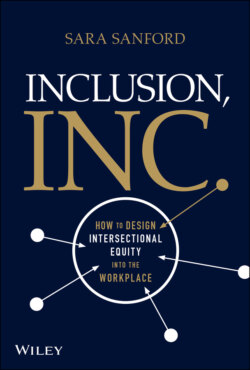Читать книгу Inclusion, Inc. - Sara Sanford - Страница 29
Finding Affinity: Employee Resource Groups
ОглавлениеFor those who are often “the only” in the room, employee resource groups or affinity groups can provide a sense of community and solidarity. While these communities can provide a safe space for people and opportunities for networking, they are also too often treated as a substitute for inclusive workplace cultures. Rather than acknowledge and support the specific role that affinity groups can play, employers often see them as an opportunity to “check” the DEI box and consider the “diversity issue” handled. Providing a siloed space for people to come together over shared identities does not counter the bias they'll continue to face throughout the organization.
These groups also don't guarantee safe spaces for all employees; while organizations may offer women's groups, or groups for people of color, this does not mean that women of color have been offered a safe space. They still face a great deal of risk sharing their experiences with either white women or men of color in spaces where they may once again be “the only.”
While I believe companies should continue to support affinity groups, treating them as a DEI solution is flawed in the same way that encouraging employees to lean in or attend trainings is flawed: It puts the onus on employees to compensate for biased institutions, rather than on the employer to debias them.
≈
“But we've always done it this way…”
I chose this as the title of the chapter because it is the response I hear most often when clients are faced with the shortcomings of the DEI approaches they've been using for years. I understand the inertia that comes with abandoning these approaches. It feels like a risk. But as we'll see in the next chapter, clinging to these methods poses an even bigger risk to the survival of companies that don't evolve.
